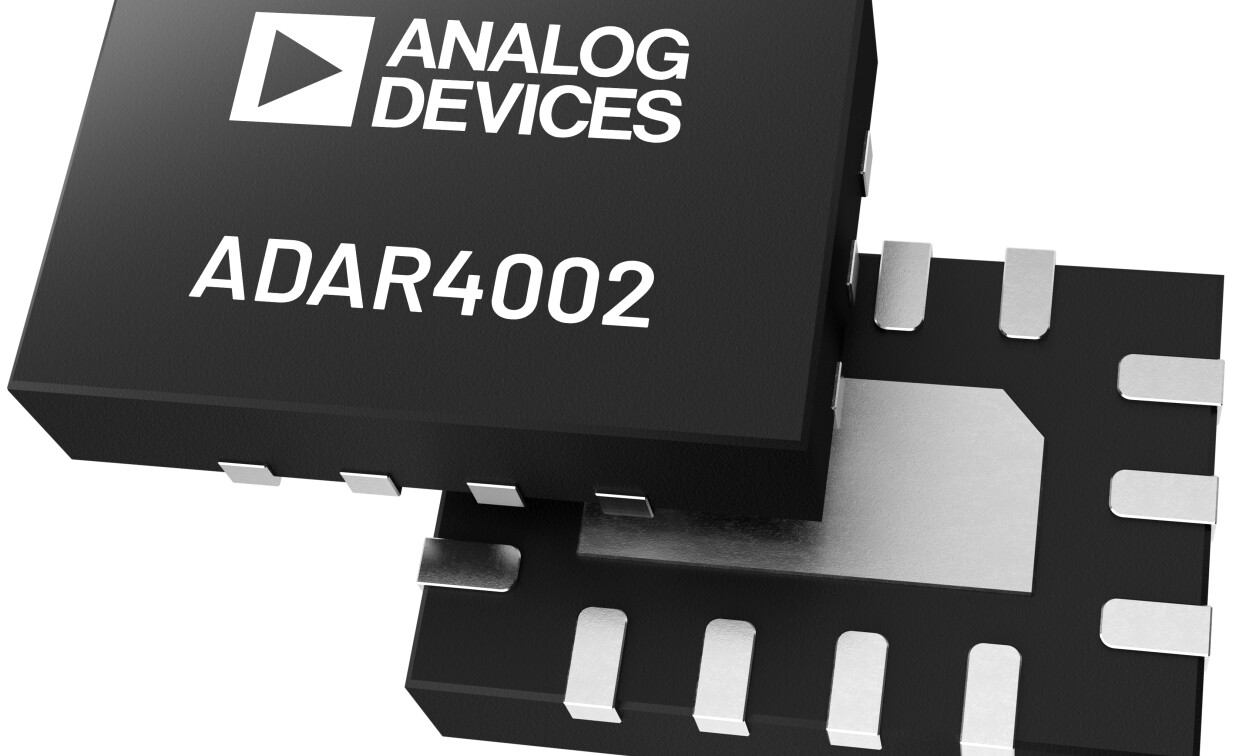PRODUCT OF THE WEEK: Analog Devices ADAR4002 low power, bidirectional time delay unit for radar, EW, SIGINT, & SATCOM applications
Sponsored StoryOctober 03, 2022

This week’s product, the Analog Devices ADAR4002, is a very low power broadband bi-directional single channel true time delay unit (TDU) and a digital step attenuator (DSA). The unit is an industry-first commercial solution that addresses the challenging size, weight, and power (SWaP) requirements of low power (<1mW), small size (2mm x 3mm), and high levels of integration in applications such as radar, electronic warfare (EW), signals intelligence (SIGINT), and satellite communications (SATCOM).
These aerospace and defense applications share common requirements and challenges including: low power dissipation, wide instantaneous bandwidths, physical layout limitations where a high level of integration is required to reduce SWaP, harsh environment requirements (space; airborne; naval). To solve these challenges, Analog Devices developed the aDAR4002, a single part that has the required wide instantaneous bandwidth, has ultra-low power, small size with very high levels of integration, and the ability to be used in space, and harsh terrestrial applications.
SATCOM
As arrays grow in size and dispersion effects are prevalent in wide steering angles the ADAR4002 can be used as part of a sub-array architecture where the time delay unit is used for compensation. In this application, the time delay is compensating for the size of the sub-array to provide an aperture that is squint- free. In addition, given the wide bandwidth of the device, it is suitable to support future modulation schemes that may drive wider instantaneous bandwidth.
Radar
For half-duplex applications, the ADAR4002 can be configured in a common leg configuration where depending on the control of the switches one would be able to receive and transmit through the same aperture. This creates a great deal of flexibility for the designer as the T/R module can be optimized for the given frequency band of interest (L, S, C, X, Ku, K). The high-speed recall of beam states enables ultra-fast beam hopping from one angle to another.
EW/SIGINT
Because of the wide bandwidth of the device, it is suitable for the front end of a software-defined aperture. The ADAR4002 provides spatial filtering and beam control to prevent blockers and interferers prior to the signal being processed by the ADC. The addition of the ADAR4002 in the signal chain has minimal impact on the overall power dissipation of the system as it only dissipates <1mW. To further reduce power, several ADR4002s can be combined through a Wilkinson combiner and fed to a single ADC. This would be a hybrid approach to increasing the number of antenna elements while minimizing the ADC count and therefore overall power consumption.
High Functionality, Small Package
A high degree of digital functionality is designed into such a small package size. There are two modes of operation designed for the various application needs, a daisy chain mode and an SPI mode. The daisy chain mode is advantageous in a tight lattice pitch design where running multiple SPI lines can be problematic. By using the daisy chain mode, the controller only needs to interface with one ADAR4002 as the data is clocked into a series of devices. There is also an optional readback to ensure that all the devices have been loaded. Once loaded, an external strobe is applied to set the beam states in less than 100nsec.
In applications where one needs to program beam states very quickly, <100nsec from one beam state to the other, the ADAR4002 has an SPI mode. In this mode one can store as many as 32 beam states in an individual ADAR4002 which can be recalled with an internal sequencer, recalling beam states in any prescribed order as dictated by the user. These two digital modes offer the designer a great deal of flexibility in design approaches to best optimize size and weight. The ADAR4002 is optimized for power consumption as this device, given all of its functionality, only dissipates <1mW of power.
Other Features:
- The IC has 18.5 GHz of bandwidth over a frequency range of 0.5 GHz to 19 GHz with 50 Ω input impedance at both RF ports.
- The unit also covers the 500MHz – 19GHz range which is on a process suitable for space applications
- The TDU has two programmable maximum time delays, each with 7-bit control:
- Range 0 has a maximum delay of 508ps with a resolution of 4ps. This range is used at lower frequencies and where the ADAR4002 has less loss.
- Range 1 has a maximum delay of 254ps and a resolution of 2ps. This range has less loss compared to Range 0 and is useful at higher frequencies.
- The DSA has 6-bit resolution with an attenuation range of 0 dB to 31.5 dB and a step size of 0.5 dB.
- The ADAR4002 contains register memory for 32 TDU+DSA states. The memory combined with on-chip sequencers, enables a fast memory advance via the UPDATE pin.
- The ADAR4002 is available in a 2 mm × 3 mm 14-lead LFCSP package
- Temperature range is specified from -40°C to 85°C.
Additional applications include electronic steerable antenna arrays, multi-function arrays, data links, and test equipment.
For more information, visit the ADAR4002 page here, or visit the company’s website, or follow the links below.
Resources:
- For more information on Analog Devices Beamformer products, click here.
- For more information on Analog Devices Time Delay products, click here.
- To sample and buy, click here.
Featured Companies
Analog Devices
Wilmington, Massachusetts 02062






